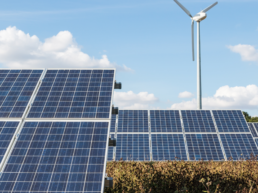The added-value of electric mobility
Platform for electromobility Statement on the Plenary vote on AFIR
As the AFIR prepares a solid legislative basis for the decarbonisation of transport in the next years, it is important to support only clean solutions and to refuse the usage of fossil fuels. An increasing penetration of e-mobility also implies a demand-reduction for fossil-fuel, that are mostly imported from instable regions, and thus higher security of supply. The European Union should be very cautious with the list of alternative fuels. Fossil fuels cannot be alternative fuels and must remain transitional with a concrete specification of their end date.
Thus, electric mobility is the most satisfactory option and should be supported in the AFIR by a strong set of targets for charging infrastructure. Here are the 4 main reasons:
Ensure energy efficiency
BEVs are the cleanest and most efficient types of powertrains for individual vehicles (T&E, 2022). Electric cars for road transport are far more energy efficient (85-90% efficient) than ICE cars (17-21%). Regarding natural gas for vehicles (NGV), 30m3 of natural gas, converted to electricity, yields 735km in an EV but 580 km in an NGV vehicle (MIT, 2010). In terms of the rail sector, it accounts for just 2% of total EU energy consumption in transport (Commission, 2021), being the most energy efficient transport mode (T&E, 2022).


Improve air quality
Road transport is a major source of air pollution in European cities. In 2019, 307,000 premature deaths were attributed to chronic exposure to fine particulate matter (PM). 40,400 premature deaths were attributed to NO2 exposure (European Energy Agency, 2021). In comparison to other technologies, electric vehicles produce no exhaust emissions. EVs are estimated to emit 20% less PM10 from non-exhaust sources per kilometre than internal combustion engine vehicles (ICEVs) (OECD, 2020) . Modal shift and the use of urban electric rail can improve air quality. In Europe, the rail sector’s share of total Nitrogen Oxide (NOx) and PM emissions of transport is respectively 3% and 4,5% (UCI, 2018).
Integrate renewable energy into the grid
Battery-on-wheel solutions, like bidirectional charging, can facilitate the integration of renewable energy to the electricity system. The combination of EVs, their batteries and smart charging functionalities as sources of ancillary services for the electricity grid will clearly bring benefits in terms of RES (Renewable Energy Sources) integration.


Reach climate neutrality
Electric cars and trains are the only available technology to reach climate neutrality. Full life cycle emissions of electric cars in Europe emit, on average, more than three times less CO2 than equivalent fossil fuel cars (Transport & Environment, 2022). Rail accounts for less than 0,4% of transport related greenhouse gas emissions in the EU (Commission, 2021).
